Advice on Canyon Farming From L.A.'s Vegetable Whisperer
http://decor-ideas.org 03/29/2014 06:23 Decor Ideas
The edible garden is a thing of beauty. It’s personal, and like singing a song, there is no one right way to do it. Lauri Kranz is certainly getting it right. She’s been hailed as the vegetable whisperer of Los Angeles, creating entrancing and productive edible havens. “I believe in wildness,” she says. Rules on the backs of seed packets dictate how to grow the vegetables, but how you put everything together is an entirely artistic endeavor.
Project at a Glance
What: Raised vegetable beds and a garden house
Location: Bel Air neighborhood of Los Angeles
Size: 448 square feet (the garden house is 28 feet long and 16 feet wide)
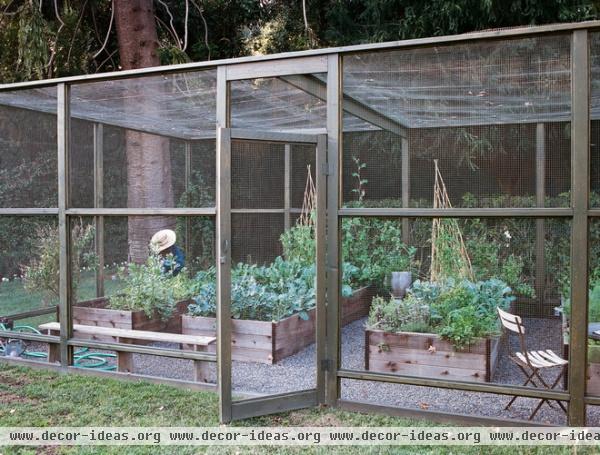
Photography by Brian W. Ferry
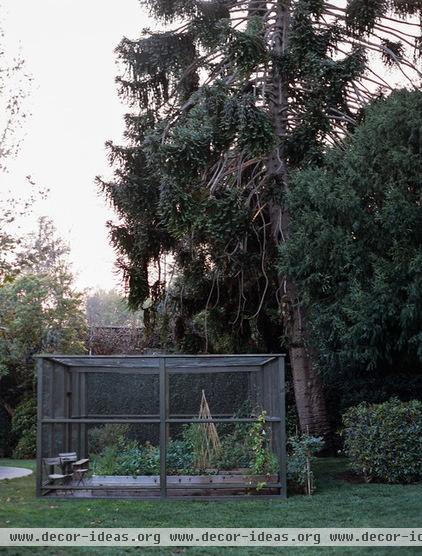
Kranz designed this garden in Bel Air for a family of avid cooks who wanted grow the food they prepared. She chose a sunny clearing on their canyon property to build. Where once stood a play structure for the kids, who are now in high school and beyond, she created a space for the entire family.
Through her company, Edible Gardens LA, she designs and maintains edible gardens throughout the hillsides and canyons of Los Angeles, often dealing with rabbits, deer and other foraging wildlife who want to get at the crops. She devised screened garden houses like this one as deterrents. Besides looking good, they work great — welcoming bees and other beneficial insects in while keeping animals out.
A screened door provides easy access to the garden, and wood benches and a café table invite you to stay awhile.
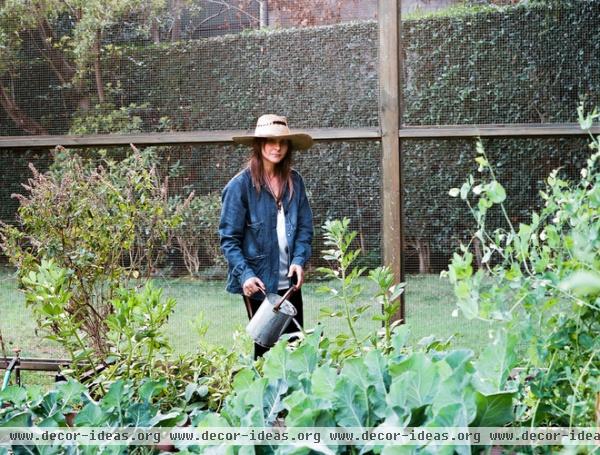
Having dealt with hungry animal grazers for years, Kranz (shown here) netted crops until realizing edibles always got tangled and deer always found a way in. She believes in the 80-20 rule. If you lose only 20 percent of your crops a season to wildlife, pests or disease, no problem, but if that shifts to losing 80 or 90 percent a season, it’s time to reassess.
Once your gardens have been discovered, she says, it’s all over. Not every canyon or hillside needs a garden house, Kranz notes, but it could be the difference between growing your own edibles or mostly feeding the animals.
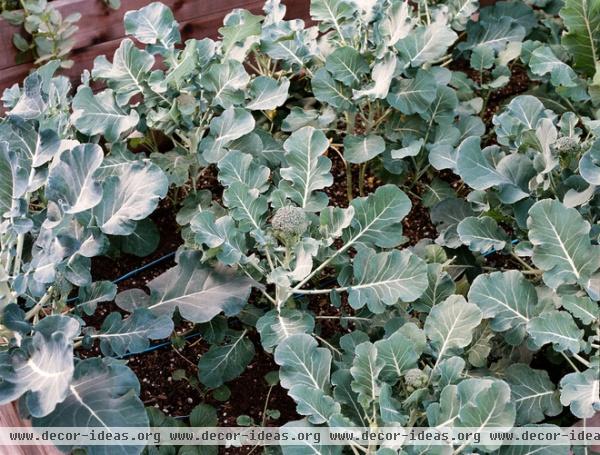
Finding consistent sunlight in the canyons can be elusive, and gardeners often play a game of chase with the light, planting edibles where they’ll get the most sunlight. Canyon and hillside gardening are extreme cases.
Choose what you plant accordingly. If your site receives only three to four hours of direct sunlight, don’t plant tomatoes or eggplant, Kranz says; maybe try leafy greens instead. Kranz farms her own canyon garden and says a lot of trial and error go into getting it right.
More about growing edibles in less sun
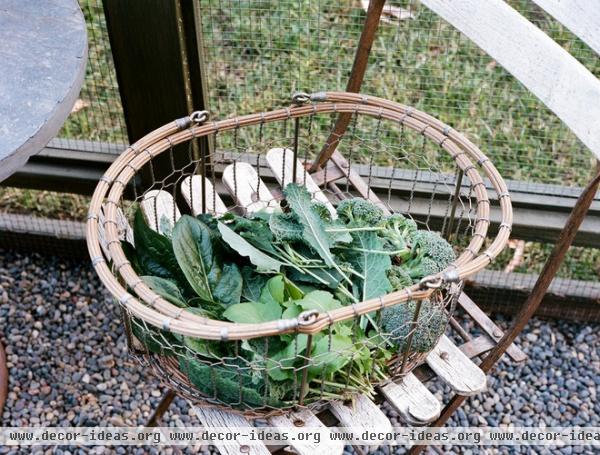
This garden in Bel Air has good southern exposure, and Kranz meets with the family every season to revisit and review what they will plant. They study what did well and what didn’t, what they would like to try out for the new season and what they didn’t use last time. She advises all her clients to try at least one new vegetable every season — whether something unknown to them or something they’d never considered before. Who knows? It may end up being a favorite.
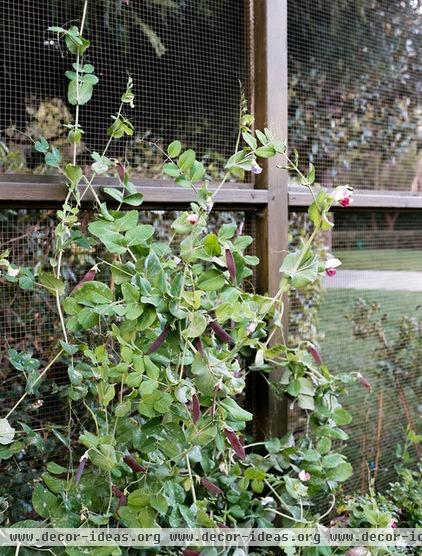
Here’s what they grew this year:
Cool-season crops. In addition to growing broccoli in fall and winter, they also grow fava beans, kale, many types of lettuce, arugula, sweet pea flowers, English shelling peas, sugar snap peas, Romanesco broccoli, cauliflower, carrots, onions, beets, napa cabbage, purple cabbage, spinach, celery and escarole. They also grow parsley, sage, thyme, rosemary, cilantro, sorrel, chives and dill, as well as wildflowers to attract pollinators.
Warm-season crops. In spring and summer they have tomatoes, basil, corn, beans, summer squash, butternut squash, acorn squash, eggplant, peppers, cucumbers, lemon verbena and a pot of mint.
Shown: Blue podded peas
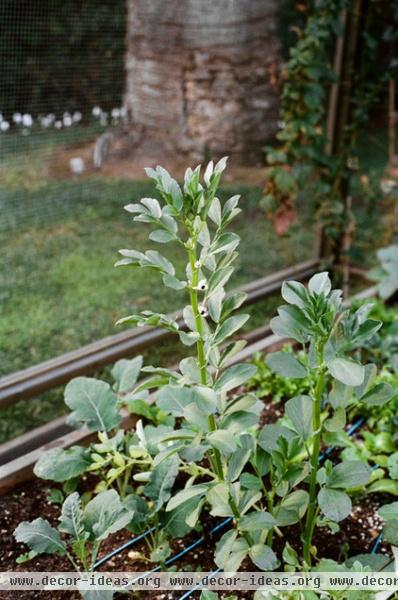
Kranz advocates crop rotation for promoting soil health. Fava beans, shown here, top her list of soil fixers. She suggests planting them after the tomato season in order to restore nutrients in the soil. She also composts and amends the soil at the end of every season.
Though gardening in raised beds is easier than gardening directly in the ground in the canyon, where soil is often poor, it’s possible to do the latter. For the first couple of years, nitrogen fixers or cover crops can help enhance soil health.
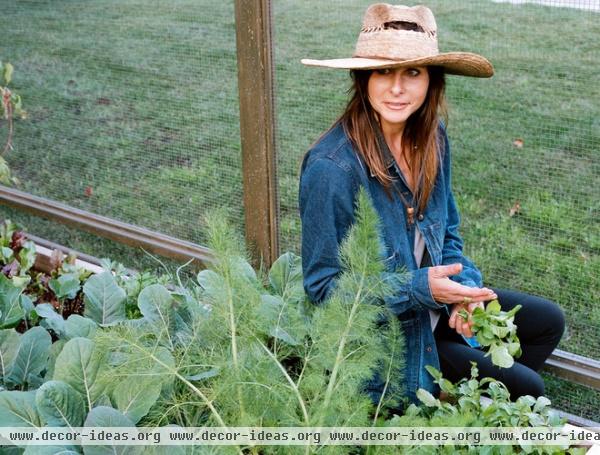
Edible gardening is different than other types of gardening, Kranz says. It requires constant attention, almost like a pet. She visits this garden weekly, witnessing its evolution and embracing the changes.
At the beginning there’s order, but things progress at their own pace. Some plants die, others thrive, and by the end the garden is something entirely different: beautiful, if wild, with its own kind of order.
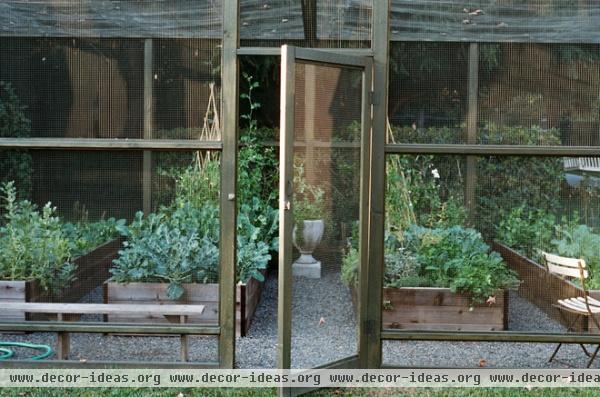
For her beds Kranz prefers using natural materials, like untreated redwood (shown here), cedar or even natural stone. She advises against building beds wider than 4 feet, or 3 feet if they are built into retaining walls or otherwise accessible only from one side. She suggests spacing them at least 2 feet apart, and though she takes advantage of as much growing space as possible, 3-foot spacing is ideal.
More: See how a Seattle gardener farms his parking strip
Related Articles Recommended












